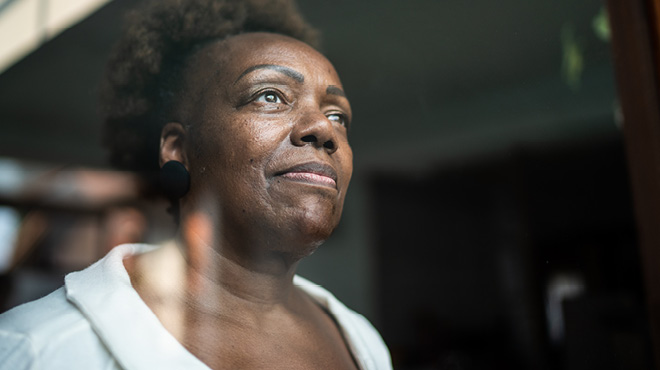Recent Posts
College students and depression: A guide for parents

Entering or returning to college is an exciting time for young adults. Students and parents hope for memorable experiences to last a lifetime. For many students, the years at college are a time of discovery and growth.
But depression may get in the way.
The rate of depression among college students is rising. In a 2021–2022 survey of students across 133 college campuses, 44% of students reported symptoms of depression and 15% reported seriously considering suicide in the past year.
For both parents and students, knowing the risk factors and symptoms can help with the early identification and treatment of depression.
Symptoms of depression can include:
- Anxiety and panic
- Difficulty with schoolwork
- Changes in eating or sleeping patterns
- Emotional outbursts, such as tearfulness, anger or irritability
- Lack of energy or fatigue
- Loss of interest in activities, such as clubs, sports or other social commitments
- Poor self-esteem
- Sense of being overwhelmed
- Thoughts of suicide or self-harm
- Unrealistic guilt
Why are young adults struggling?
Although the problems facing college students are complex. They often feel intense pressure to succeed while still developing necessary life skills.
The rising cost of education places additional stress on students and their families. Children are being pushed to their limits as early as elementary school. As a result, their mental health and well-being are suffering.
Many middle and high school students have schedules rivaling top corporate executives, with an average day beginning at 6 a.m. and ending after 10 p.m. These demanding schedules leave many sleep deprived with little time to develop basic independent living skills, such as doing laundry, cooking meals, managing money and accessing services to meet their needs. They do this all while figuring out, "Who am I?"
These skill deficits compound as young adults go to college and face relationship challenges and heavy class schedules. They may also be living separately from their parents for the first time.
Helping children find a balance between achievement and life's demands begins at home.
Here are tips for parents and children before college:
- Set a realistic view of the big picture.
Giving 100% at all times in all areas of life is unrealistic. Encourage students to focus on making the most of their college experience by forging positive relationships, creating fun memories and preparing for their future careers. - Build independent living skills at a young age.
Online resources are available to find age-appropriate chores for children to help you start the process. - Protect downtime or unstructured time for middle and high school students.
This is when students start to explore who they are.
What are the risk factors for college students?
Unfortunately, as many as 75% of students who struggle with depression are reluctant to seek help. This increases the risk of harmful outcomes, such as dropping out of college, poor academic performance, suicide and substance abuse.
College students may be exposed to many situations or risk factors that could trigger an episode of depression:
- Comparison of academic, athletic or social performance to their peers
- Drug or alcohol use
- Family history of depression
- Fears of disappointing parents because of grades or career path
- Peer relationship difficulties
- Relationship breakup
- Sexual assault
- Sexual identity adjustment difficulties
- Stressful life events
Those at highest risk for depression and anxiety are:
- Female students
- Low-income students
- Students of color
- Students who are caregivers for children or other adults
- Students who identify as LGBTQ.
What are the warning signs of suicide?
Suicide is the second-leading cause of death in young people ages 20 to 24. While the factors that lead to suicide are multifaceted, being diagnosed with a mental illness like depression increases the risk.
These behaviors may indicate that students are thinking about suicide:
- Displaying extreme mood swings
- Giving away possessions
- Increasing use of alcohol or drugs
- Ignoring class work or skipping classes
- Engaging in risky or self-destructive acts, such as using drugs or driving recklessly
- Saying goodbye to people as if they won't be seeing them again
- Showing anger or rage or expressing a desire to seek revenge
- Sleeping too little or too much
- Talking about suicide
- Talking about being a burden to others
- Talking about feeling trapped, hopeless or having no purpose
- Withdrawing from friends and wanting to be left alone
This is not an exhaustive list. Be alert to behavior and personality changes that can provide clues to a student's well-being.
What can parents do to help students?
Parents often worry about how their child will react if they try to talk the signs and symptoms of depression. But it's crucial to have a conversation about your concerns.
Be direct with your child. Give examples of symptoms you've noticed and explain why these examples worry you. Be patient, calm and empathetic in your communication.
Students often believe they are to blame for their mental health concerns, which can lead to defensiveness or shutting down. To reduce the stigma, help students understand it's not their fault, and many young adults experience depression.
If you have concerns, it's important to ask your students if they're considering suicide or self-harm. This won't put the idea in their heads. If your student is expressing thoughts about suicide, you must seek immediate medical attention.
Many colleges and universities provide mental health services on campus. Your child's primary care provider has resources and can refer your student to a mental health counselor. Parents and students should have hope since many effective treatments for depression exist.
Kristen Bowe is a nurse practitioner in Family Medicine in New Prague, Minnesota.





